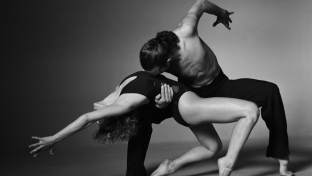Dancing is so much more than just having fun. The benefits of dancing are a beautiful posture, training almost all the muscles of the body, improving the function of the respiratory system, strengthening the cardiovascular system, active calorie burning and a beautiful walk. But the useful properties of dance movements do not end there. Dancing improves brain function. Estet-portal.com will tell you why professional dancers and lovers of music can not worry about brain health.
The benefits of dancing are manifested in increasing the neuroplasticity of the brain
New York researchers have been studying age-related cognitive decline for 21 years to find out what physical or mental activities help keep your mind sharp in adulthood. The benefits of dancing (with regular practice) in this aspect outweighed even the benefits of reading. So, regular dancing helps reduce the risk of dementia by 76% (reading - by 35%, solving crossword puzzles - by 47%). People who dance often have more cognitive reserves, and the system of neural connections is particularly complex. Dancing helps to increase brain neuroplasticity by forming new connections between nerve cells.
Speed of decision-making explains the intellectual benefits of dancing
When the brain evaluates the various possibilities of responding to a given situation, when we do not know what we need to do, we use the intellectual abilities. Activities that require a lightning-fast reaction from the brain and the fastest possible decision-making have a beneficial effect on the development of intelligence. From this point of view, the benefits of dancing are obvious. In a split second, the brain has time to answer many questions:
- where to put your foot;
- which way to turn;
- how fast to move;
- how to react to partner's movement.
Dancing is a great way to preserve and develop the intellect.
Specialists studied the process of dance from the point of view of cognitive processes. They noted that the process of memorizing movements reduces the conflict between the cognitive and mental aspects of the dance - so it is easier for trained dancers to memorize and repeat new movements.

The irrefutable benefits of dancing: improving memory and slowing down aging
The more complex the neural connections, the better, according to experts. Therefore, it is necessary to do what contributes to the creation of new neural pathways. And the benefits of dancing in this case are enormous.
As we age, brain cells die and neural connections weaken. It becomes more difficult for a person to remember the names of people and other information precisely because of the destruction of connections between brain cells.
If you're constantly learning new things, and dancing is no exception, you're constantly working to create new pathways in your brain that provide enough room to store the information you need.
What are the benefits of dancing for dizziness
Have you ever wondered why ballet dancers don't get dizzy while pirouettes? It is assumed that with years of practice and training, dancers gain the ability to suppress signals from the inner ear to the cerebellum. The benefit of dancing is that over time, so to speak, it dampens the signals to the areas of the brain responsible for the perception of dizziness. Therefore, the dancers acquire a certain immunity to dizziness.
Dancing improves the function of the cerebellum, which helps a person to gain balance and less likely to succumb to the feeling of dizziness.
To feel the benefits of dancing for yourself, it is not necessary to be a professional dancer - it is enough to practice regularly and enjoy the process. When the rational, musical, kinesthetic and emotional functions of the brain improve, you will feel much better!






Add a comment